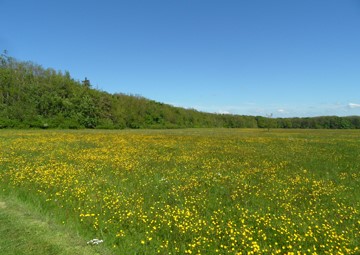Stoichio
Land-use effects on plant–herbivore stoichiometry: micro- and macronutrients
As part of the DFG priority programme „Biodiversity Exploratories“, Stoichio focusses on the quantitative and qualitative evaluation of nutrients, their regulation within and the transfer between species and their environment (Ecological stoichiometry). This project aims at understanding regulatory mechanisms of stoichiometry from soil to vegetation and whole herbivore communities along a land use gradient. Nutritional stoichiometry is element and species specific. Whereas some elements in organisms vary proportionally to their respective source, others are regulated to a constant level or present a certain source-independent variability. Species and even individuals have different nutrient requirements and are able to regulate their internal nutritional levels according to their needs. Whereas some maintain quite constant levels independent of nutrient availability (stoichiometric homeostasis), others present with a certain plasticity in internal nutrient levels (stoichiometric plasticity) according to availability. However, the regulating processes of nutritional stoichiometry on an individual level up to the community of consumers are still very poorly understood.
Changes in nutrient availability in the soil (due to interspecific competition or agricultural management) influence species richness, community composition and grassland productivity. It is not known, nevertheless, whether and how these aspects are affected by interspecific variation in nutritional homeostasis and quantitative requirements of species. In order to better comprehend species distribution patterns, biodiversity and ecosystem dynamics, it is important to understand the mechanisms behind species’ limitation by nutrients and their regulation. It is hypothesized that the distributional range of plant and herbivore communities along a gradient of resource stoichiometry is constrained or influenced by the level of homeostasis or plasticity of species.

Our research aims at answering following questions:
- Which nutrients are found in different concentrations in biomass respective to their availability in the soil? Does this variability depend on land-use intensity or phytodiversity?
- Are average nutrient concentrations and levels of homeostasis in selected species modified by land use intensity and nutrient availability in the soil? Do they interrelate with productivity?
- Are species rich grasslands more stable with respect to nutrient composition in biomass or productivity than species poor grasslands?
PIs: Prof. Dr. Kleinebecker, Prof. Dr. Nico Blüthgen, PD Dr. Karsten Mody (both TU Damstadt)
Duration: 2014-2017
Funding: DFG
Publications
- Busch V, Klaus VH, Schäfer D, Prati D, Boch S, Müller J, Christé M, Mody K, Blüthgen N, Fischer M, Hölzel N, Kleinebecker T (2019) Will I stay or will I go? Plant species specific response and tolerance to high land-use intensity in temperate grassland ecosystems. Journal of Vegetation Science 30: 674-686
- Busch V, Klaus VH, Penone C, Schäfer D, Boch S, Prati D, Müller J, Socher S, Niinemets Ü, Peñuelas J, Hölzel N, Fischer M, Kleinebecker T (2018) Nutrient stoichiometry and land use rather than species richness determine plant functional diversity. Ecology and Evolution 8 (1): 601–616 [doi:10.1002/ece3.3609] Open Acces
- Kleinebecker T, Busch V, Hölzel N, Hamer U, Schäfer D, Prati D, Fischer M, Hemp A, Lauterbach R, Klaus VH (2018) And the winner is … ! A test of simple predictors of plant species richness in agricultural grasslands. Ecological Indicators 87: 296-301 [doi:10.1016/j.ecolind.2017.12.031]
